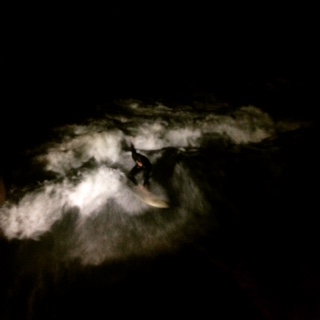Some days you feel like the contrast between your reality and someone else`s reality could not be bigger. The day we went to visit Eggs Design`s studio in Oslo was one of those days. The theme of that day`s lecture was digital wilderness, and it could not be more fitting as Eggs works with digital design for among other the ocean tech industry. However, my own experience prior to the visit made me feel more like I was on urban safari, only equipped with songlines.
Malin Kristine Eriksen
“ If you need to use a cannon to get a fish moving through a river system, then there might be something more fundamentally wrong with the infrastructure along the river system”. Here I am paraphrasing David Montgomery, professor of geomorphology at the university of Washington. He makes a compelling argument. As is often the case in places where fish ladders needs to be constructed, the river system it self has been imposed on by human activity. There seem to be a parameter within thinking about preservation of nature that “good” nature is undisrupted by human activity. And that if humans had not interfered in the first place, there would be no need for preservation activities. However, as part of nature we do have impact on the ecosystems we operate in. We inevitably design and shape our surroundings either by intention or accident. As a consequence we change our surroundings. But is this change solely bad?
How do we make better cities? Cities that are better for its inhabitants, better for the environment and above all sustainable? Well, if you ask the designers behind the studio Growlab, they definitely know where to start.
So what does a bagle -bicycle, a chicken at a music festival and a speech bubble in one of Oslo´s more shady streets have in common? They are all "real examples of a better city" (from Growlab website).
Wherever humans settle and human habitats expand into the surrounding landscape there will be an inevitable confrontation with the members of encountered ecosystems. More often than not, these confrontations ends in the prevalence of the human habitat, on the expense of the wildlife. These interferences might cause the separation of wildlife populations or prevent the natural migration of certain species. If the design of cities, villages, bridges, dams, roads ect. got us into this mess, can design be deployed to get us out of it?
In the next four blog posts I will be doing a case- study of a type of wildlife corridor – a wildlife corridor being a construction or design that facilitates a connection between habitats that have been separated by human action- that has been intentionally designed to aid the migration of fish in obstructed water streams. The salmon ladder.



